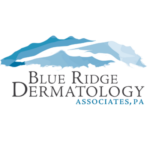It’s a safe bet that most people have experienced more than one skin rash in their lives. From birth to old age, rashes affect everyone. They can be itchy, irritating, annoying, or downright painful. Many people are also bothered by how they look. When you talk to a dermatologist about your issues with skin rashes, they’ll need to diagnose the cause of the rash in order to properly treat it.
Causes of Skin Rashes
Skin rashes come in many forms. They differ in appearance, texture, symptoms, and of course, what causes them. Rashes can be triggered by a large variety of factors, but five of the top causes of rashes are eczema, contact dermatitis, psoriasis, hives, and rosacea.
1. Eczema
Most people associate eczema with itchy children, but you can get it as an adult, too. It’s the most common skin rash, affecting more than 31 million Americans. Eczema is evident by its itchy, red, inflamed patches of skin in light skin tones. It looks brown, purple, gray, or ashen in darker skin tones.
Eczema is not something you can catch from someone else. Instead, it’s a skin response triggered by your immune system and due to genetic and environmental factors. But it can be a chronic condition that causes reoccurring skin rashes.
Atopic dermatitis is a chronic, inflammatory type of eczema that can start in childhood but reappear in adulthood. It flares up in response to stress, weather changes, poor sleep, and irritating fabrics or products. Avoiding these triggers is the first step of treatment, but gentle skincare, a daily moisturizer, and healthy sleep habits go a long way.
2. Contact Dermatitis
The most likely source of these skin rashes is an allergic reaction where your skin comes into contact with an irritant. You may have had a brush with poison ivy, leaving behind a line-shaped or streaking rash. Nickel and rubber are lesser-known yet common causes of contact dermatitis. But you could be allergic to anything from a certain type of fabric to a chemical in your laundry detergent.
Skin rashes due to allergic contact dermatitis typically take a few days to show up, so it’s not always easy to identify the source. You may get itchy, red, or swollen skin and can develop blisters near the site of contact. The best remedy is to avoid the allergen or irritant altogether. You can also apply topical hydrocortisone cream or take an oral antihistamine to ease the itching.
3. Psoriasis
Psoriasis is a chronic inflammatory disease that can cause patches of thick, dry skin covered with silvery scales. Known as plaques, these itchy, raised patches can appear anywhere on the body. An estimated 7.5 million Americans have psoriasis, which is thought to occur when a faulty immune system accelerates the growth cycle of skin cells.
Up to a third of people with the condition also suffer from psoriatic arthritis, which causes joint pain and swelling. The exact cause of psoriasis is unclear, but genetics play a role. Treatments such as topical creams, light therapy, and medications can help manage psoriasis symptoms.
4. Hives
Urticaria, also known as hives, is a skin rash that comes on suddenly and causes pale pink or red, itchy welts, which sometimes burn or sting. This skin condition can occur anywhere on the skin. Up to 20 percent of people may experience hives at least once in their lifetime.
Hives may last for a few days or a few weeks and may be caused by an allergic reaction, typically to a food or medication or a recent cold or illness. The most common treatment is to avoid the cause and treat the symptoms with an antihistamine medication. Speak to a physician if an individual welt or hive lasts longer than 24 hours and is associated with any pain or fever.
5. Rosacea
More than 16 million people have rosacea, a skin disease that results in a red, rosy face. You may also get visible blood vessels and small, red, fluid-filled bumps on your face. A rosacea rash can appear on your cheeks, forehead, chin, and tip of your nose, giving you a flush appearance.
Rosacea typically affects people with fair skin between the ages of 30 and 50. The rash comes and goes. It can disappear for years, only to erupt again. Over time, your skin may not return to its original color once rosacea goes into remission, leaving you with a pink or red skin tone.
Talk to a Dermatologist
If you struggle with skin rashes or another dermatological issue, we are here to help. Blue Ridge Dermatology is proud to offer medical and cosmetic dermatological services that can help you get the results you want. So if you are interested in making a skincare plan for this year, call our office today at 919-781-1050.



